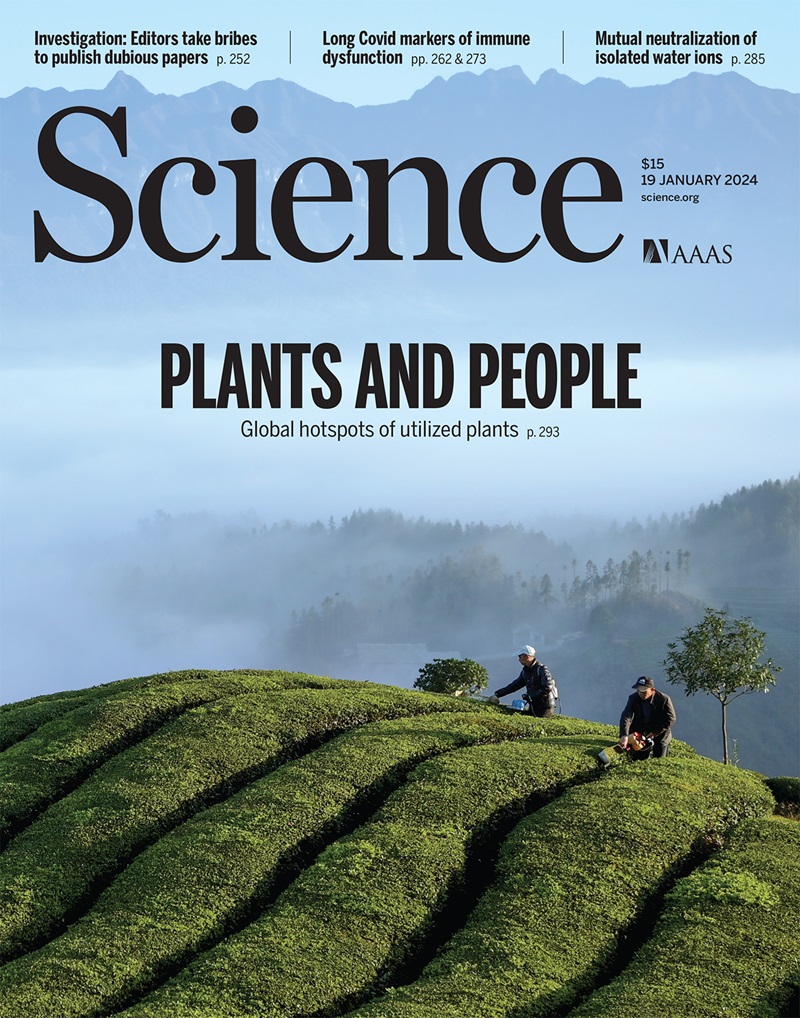Human high-order thalamic nuclei gate conscious perception through the thalamofrontal loop
IF 44.7
1区 综合性期刊
Q1 MULTIDISCIPLINARY SCIENCES
引用次数: 0
Abstract
Human high-order thalamic nuclei activity is known to closely correlate with conscious states. However, it is not clear how those thalamic nuclei and thalamocortical interactions directly contribute to the transient process of human conscious perception. We simultaneously recorded stereoelectroencephalography data from the thalamic nuclei and prefrontal cortex (PFC), while patients with implanted electrodes performed a visual consciousness task. Compared with the ventral nuclei and PFC, the intralaminar and medial nuclei presented earlier and stronger consciousness-related activity. Transient thalamofrontal neural synchrony and cross-frequency coupling were both driven by the θ phase of the intralaminar and medial nuclei during conscious perception. The intralaminar and medial thalamic nuclei thus play a gate role to drive the activity of the PFC during the emergence of conscious perception.

人类高阶丘脑核通过丘脑额叶环控制有意识的知觉
众所周知,人类高阶丘脑核的活动与意识状态密切相关。然而,尚不清楚这些丘脑核和丘脑皮质的相互作用如何直接促进人类意识知觉的短暂过程。当植入电极的患者执行视觉意识任务时,我们同时记录了丘脑核和前额叶皮层(PFC)的立体脑电图数据。与腹侧核和PFC相比,层间核和内侧核表现出更早和更强的意识相关活动。在意识知觉过程中,瞬态丘脑额叶神经同步和交叉频率耦合均由层内核和内侧核的θ相驱动。因此,在有意识知觉出现期间,层内核和内侧丘脑核在驱动PFC的活动中起着门户作用。
本文章由计算机程序翻译,如有差异,请以英文原文为准。
求助全文
约1分钟内获得全文
求助全文
来源期刊

Science
综合性期刊-综合性期刊
CiteScore
61.10
自引率
0.90%
发文量
0
审稿时长
2.1 months
期刊介绍:
Science is a leading outlet for scientific news, commentary, and cutting-edge research. Through its print and online incarnations, Science reaches an estimated worldwide readership of more than one million. Science’s authorship is global too, and its articles consistently rank among the world's most cited research.
Science serves as a forum for discussion of important issues related to the advancement of science by publishing material on which a consensus has been reached as well as including the presentation of minority or conflicting points of view. Accordingly, all articles published in Science—including editorials, news and comment, and book reviews—are signed and reflect the individual views of the authors and not official points of view adopted by AAAS or the institutions with which the authors are affiliated.
Science seeks to publish those papers that are most influential in their fields or across fields and that will significantly advance scientific understanding. Selected papers should present novel and broadly important data, syntheses, or concepts. They should merit recognition by the wider scientific community and general public provided by publication in Science, beyond that provided by specialty journals. Science welcomes submissions from all fields of science and from any source. The editors are committed to the prompt evaluation and publication of submitted papers while upholding high standards that support reproducibility of published research. Science is published weekly; selected papers are published online ahead of print.
 求助内容:
求助内容: 应助结果提醒方式:
应助结果提醒方式:


